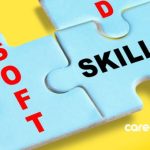Development of the Recruitment function is critical for companies to acquire and build the workforce of the future. However, this only covers one side of the challenge.
On the other side is retention. Employee retention relies on different factors, including employee engagement or experience, compensation and benefits, work-life balance, professional development, office morale, employee onboarding and office collaboration. Organisations are growing weary of not keeping the talent needed and replacing them is not enough. High staff turnover also has a material financial impact on organisations, rendering them unable to keep up with the competition.
Retention doesn’t equal employee engagement
If you conducted stay interviews to ask what would encourage staff to stay with you, the answers would probably be centred on higher compensation and better benefits. Competitors are also using money to lure away top talents and best candidates, and most of the time, they are successful. The material negative impact of compensation as a retention tool drives salary inflation unevenly across a business and industry sector. The more significant material impact is that it keeps disengaged talent on your payroll.
In retaining employees, better compensation must be combined with a stronger sense of purpose that delivers greater employee engagement and development.
Purpose-driven leadership, employee engagement and retention
Purpose-driven leadership is about rewarding employees with growth opportunities, rather than only offering a pay increase. This includes leadership programmes, upskilling, wellness activities, work-life balance initiatives and career mobility, which contribute to greater employee engagement. Employees must be encouraged to develop their skill sets. After all, retaining employees who are not engaged and productive decreases your Return on Human Capital.
While Gen Z and Millennial employees will continue to grow exponentially, there is also a renewed focus on better accommodating mature-age workers. They are looking for strong leadership to represent them for their capabilities, knowledge and skills, not their age.
Better understanding employee retention
Employee retention is key in human capital management and to understand employee retention deeper means measuring it. It isn’t easy to do so if your organisation is not equipped with the right skills and tools. Increasingly, organisations are relying on actionable feedback from their employees to come up with retention strategies, but many of them don’t act on it.
In the Engagement and Retention survey report by Achievers with 2,000 respondents, one of the key findings is that employers tend to drop the ball when it comes to their responses and resolutions on employee feedback. To better understand employee retention, talk to your staff and engage in the discussion. Articulate the organisational and financial impacts of the high turnover rate. Losing high-performing employees means a drop in productivity, low engagement, more training and onboarding costs, and cultural impact.
How to improve employee retention?
The best way is to develop the “right solutions” for the “right reasons” for employees to stay, engage and thrive. These retention solutions or strategies should be compatible with your employees and the value they bring on board. It is essential to get it right for the present and future of work.
Ultimately, the purpose is to deliver additional value through their contributions to all stakeholders and grow as professionals.
This article is contributed by Will International.
















